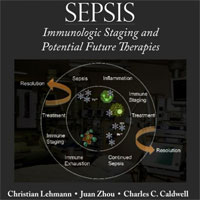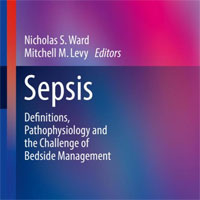Tag: inflammation
Endothelial Dysfunction Role During COVID-19
Emerging data suggest a crucial role of endothelial dysfunction during SARS-CoV-2 infection, as a direct target of the virus and inflammatory cytokines as well as the main actor in orchestrating a pro-inflammatory and pro-coagulant... read more
Stress Hyperglycemia and Mortality in Subjects With Diabetes and Sepsis
Stress-induced hyperglycemia is a relevant prognostic factor also in the presence of diabetes. Mild-to-moderate stress hyperglycemia is considered a protective reaction to providing fuel for the immune system and brain at... read more
Gastrointestinal Complications in Critically Ill Patients With and Without COVID-19
This study found a higher rate of gastrointestinal complications, including mesenteric ischemia, in critically ill patients with COVID-19 compared with propensity score–matched patients without COVID-19, suggesting a distinct... read more
Fibrin-derived Peptide as Salvage Treatment in Critically Ill Patients with COVID-19-associated ARDS
After SARS-CoV-2 first occurred in China in December of 2019, it set out to become a global pandemic. Critically ill patients constitute about 2–9% of all infected patients and progress from pneumonia and hypoxemia to multi-organ... read more
Acute myocarditis and multisystem inflammatory emerging disease following SARS-CoV-2 infection in critically ill children
Acute myocarditis with intense systemic inflammation and atypical Kawasaki disease is an emerging severe pediatric disease following SARS-CoV-2 infection. Early recognition of this disease is needed and referral to an expert... read more
Plasma Exchange in Critically Ill COVID-19 Patients
The spectrum of coronavirus disease 2019 (COVID-19) ranges from asymptomatic infection to respiratory failure and death of patients. Severely affected patients may develop a cytokine storm-like clinical syndrome with multi-organ... read more
Laboratory Features of Severe vs. Non-severe COVID-19 Patients in Asian Populations
This meta-analysis provides evidence for the differentiation of severe cases of COVID-19 based on laboratory test results at the time of ICU admission. Future well-methodologically designed studies from other populations... read more
Pulmonary Embolism in COVID-19 Patients in France
Pulmonary embolism (PE) in the context of coronavirus disease 2019 (COVID-19) appears to be driven largely by inflammation and coagulopathy rather than by traditional risk factors for thromboembolism. Study results suggest... read more
Pediatric Critical Care and COVID-19
We provide early clinical and laboratory data about critical pediatric COVID-19, which suggest a variable disease but generally good outcomes compared with adults. Targets for research include the course of organ failure... read more
Anaphylatoxin C5a Impairs Phagocytosis by Neutrophils
This study provides new insight into the mechanisms underlying immunocompromise in critical illness and suggests novel avenues for therapy and prevention of nosocomial infection. Critically ill patients are at heightened... read more
Increase in Rare Brain Inflammation and Stroke Linked to COVID-19
Preliminary clinical data indicate that severe acute respiratory syndrome coronavirus 2 (SARS-CoV-2) infection is associated with neurological and neuropsychiatric illness. Responding to this, a weekly virtual coronavirus... read more
Autopsies Link Immune Response to Death from COVID-19
An autopsy-based study of 11 people who died from COVID-19 shows a mismatch between viral hotspots in the body and sites of inflammation and organ damage, suggesting that immune responses, rather than the virus itself, are... read more
Prophylaxis and Treatment of Venous Thromboembolic Disease in COVID-19
Patients with COVID-19 appear to be at elevated risk for thrombotic complications, including venous thromboembolism (VTE).1 In addition to traditional risk factors for VTE, indirect effects of the severity of illness as well... read more
The Relevance of Thromboinflammation and Endothelial Dysfunction in COVID-19 Patients
The relevance of thromboinflammation and endothelial dysfunction in COVID-19 patients. Microvascular derangement is a key mechanism of multiple organ dysfunction and therapeutic strategies other than heparin, aimed at preserving... read more
The Impact on Pediatric Emergency Care during COVID-19
Although most children with COVID-19 are asymptomatic or present with mild disease, serious—but rare—complications are being seen in pediatric patients. This supplement describes the epidemiology, clinical features, and... read more
Spotting the Clotting: Hypercoagulopathy in COVID-19
Evolving experience with TEG, clotting parameters, treatment considerations, and ongoing data gathering will help us better understand if antiplatelet therapy with aspirin or clopidogrel or anticoagulant treatment with traditional... read more
Clinical Characteristics of 58 Children With a Pediatric Inflammatory Multisystem Syndrome Temporally Associated With SARS-CoV-2
In this case series of hospitalized children who met criteria for PIMS-TS, there was a wide spectrum of presenting signs and symptoms and disease severity, ranging from fever and inflammation to myocardial injury, shock,... read more
Blood Vessel Attack Could Trigger Coronavirus’ Fatal Second Phase
Frank Ruschitzka told his pathologist to be ready before the first COVID-19 patient died. In early March, Ruschitzka, who leads the cardiology department at University Hospital Zürich, noticed that patients with the disease... read more
Are Phenotypes a Magic Bullet for Sepsis?
There's a constant battle in medicine between practice styles—standardization and customization. Standardization is order sets and doing the same thing for every patient every time because it (hopefully) delivers better... read more
Phenotypic Heterogeneity by Site of Infection in Surgical Sepsis
There are notable differences in baseline predisposition, host responses, and clinical outcomes by site of infection in surgical sepsis. While previous studies have focused on differences in hospital mortality, this study... read more
New Study Showing CBD Strains Lower Chances of COVID-19
With the rapidly growing pandemic of COVID-19 caused by the new and challenging to treat zoonotic SARS-CoV2 coronavirus, there is an urgent need for new therapies and prevention strategies that can help curtail disease spread... read more
Broad Spectrum Vasopressors
We propose the notion of "broad spectrum vasopressors" wherein patients with septic shock are started on multiple vasopressors with a different mechanism of action simultaneously while the vasopressor sensitivity is assessed.... read more









